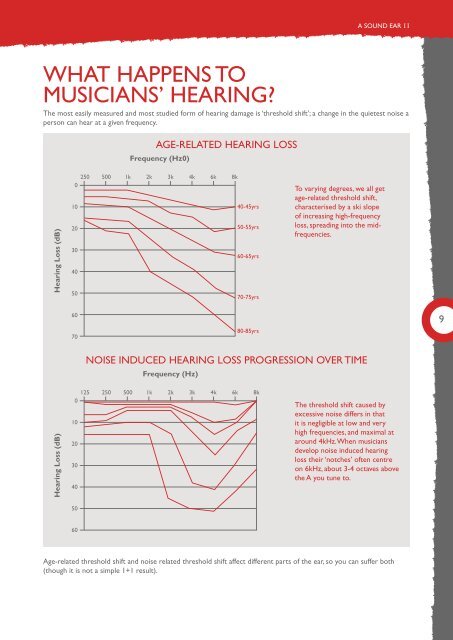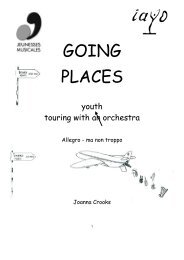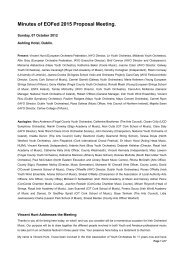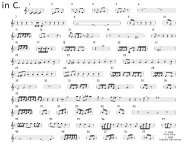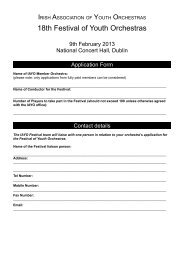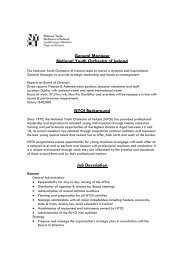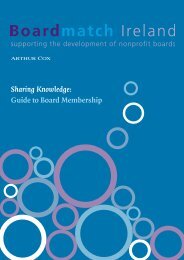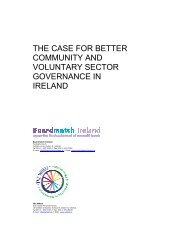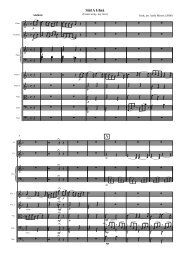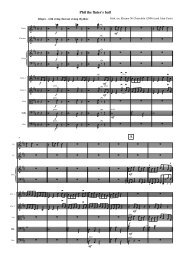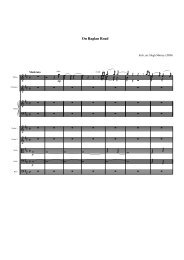A SOUND EAR II - Association of British Orchestras
A SOUND EAR II - Association of British Orchestras
A SOUND EAR II - Association of British Orchestras
You also want an ePaper? Increase the reach of your titles
YUMPU automatically turns print PDFs into web optimized ePapers that Google loves.
A <strong>SOUND</strong> <strong>EAR</strong> <strong>II</strong><br />
What happens to<br />
musicians’ hearing?<br />
The most easily measured and most studied form <strong>of</strong> hearing damage is ‘threshold shift’; a change in the quietest noise a<br />
person can hear at a given frequency.<br />
AGE-RELATED H<strong>EAR</strong>ING LOSS<br />
Frequency (Hz0)<br />
Hearing Loss (dB)<br />
250 500 1k 2k 3k 4k 6k 8k<br />
0<br />
10<br />
20<br />
40-45yrs<br />
50-55yrs<br />
30<br />
60-65yrs<br />
40<br />
50<br />
70-75yrs<br />
To varying degrees, we all get<br />
age-related threshold shift,<br />
characterised by a ski slope<br />
<strong>of</strong> increasing high-frequency<br />
loss, spreading into the midfrequencies.<br />
60<br />
70<br />
80-85yrs<br />
NOISE INDUCED H<strong>EAR</strong>ING LOSS PROGRESSION OVER TIME<br />
Frequency (Hz)<br />
9<br />
Hearing Loss (dB)<br />
125 250 500 1k 2k 3k 4k 6k 8k<br />
0<br />
10<br />
20<br />
30<br />
40<br />
50<br />
The threshold shift caused by<br />
excessive noise differs in that<br />
it is negligible at low and very<br />
high frequencies, and maximal at<br />
around 4kHz. When musicians<br />
develop noise induced hearing<br />
loss their ‘notches’ <strong>of</strong>ten centre<br />
on 6kHz, about 3-4 octaves above<br />
the A you tune to.<br />
60<br />
Age-related threshold shift and noise related threshold shift affect different parts <strong>of</strong> the ear, so you can suffer both<br />
(though it is not a simple 1+1 result).


